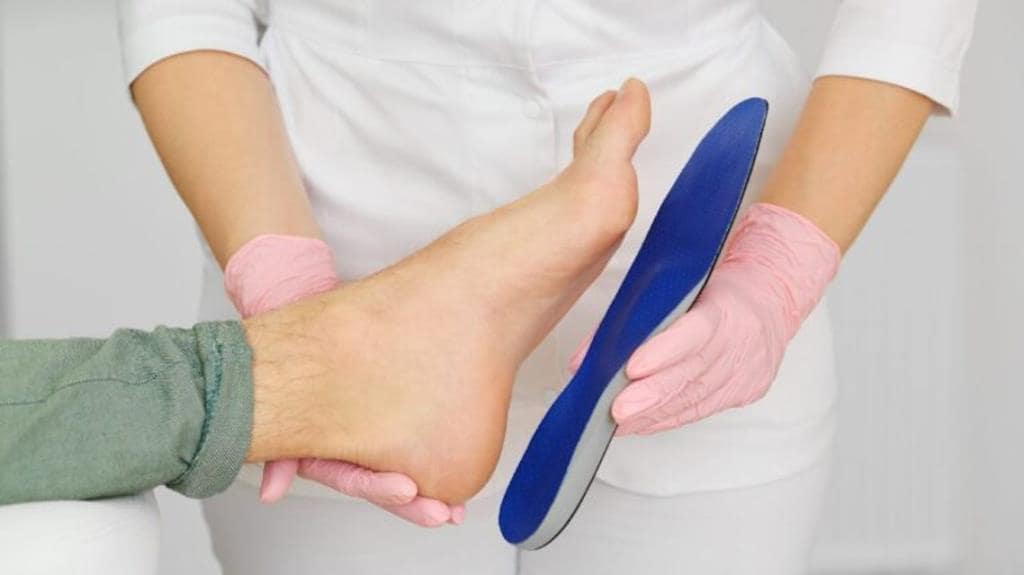You might know of these as inserts, footbeds, insoles, or orthotics. Regardless of the name, not many people have the perfect feet. This also means that the majority of people could be benefiting from orthopedic shoes.
However, orthotics might help certain people more than when compared to others. Keep reading to find out more about a few of the common indications that you may need orthotics or whether this type of footwear could help you to improve your foot or ankle problems.
What Are Orthotics?
There are currently two foot support types that you can invest in to help improve comfort or to ease the pain.
-
Inserts
You can buy inserts over-the-counter without the need for a prescription. These products are typically made from foam, plastic, or gel, and fit into your shoes in order to provide support or extra cushioning. Even though these products are not customized for your foot or feet, they are designed to relieve pressure or pain around your toes, your heels, or your whole foot.
-
Orthotics
An orthotic is a prescription insert that also goes inside your shoes in order to correct a foot problem such as issues with running, standing, or walking. They can also assist with discomfort or pain caused by conditions such as arthritis, bursitis, plantar fasciitis, or diabetes. At the same time, they can assist with avoiding or treating conditions like neuromas, bunions, and tendonitis. Ryka shoes have built in orthotics making them a comfortable choice.
How does a podiatrist determine whether a patient requires orthotics?
The 5 common signs that indicate whether a person needs orthotics typically include:
- You either have a high arch or no arch in your feet or foot
- Your job requires you to stand for over 5 hours a day
- You have worn-out shoes
- You have experienced a recent injury in one of your lower limbs
- You have pain that is severe in your heel or foot
At your appointment with a podiatrist, you can expect X-rays or 3D images of your feet and a comprehensive examination. The podiatrist may ask you to stand, run, or walk, so that they watch how your hips, legs, ankles, and feet move. They will also conduct a physical exam of your back, hips, legs, and feet.
If you are needing orthotics, your podiatrist will first make a mold of each foot. When the mold or molds are ready, they will be transformed into customized orthotics for your feet.
Orthotic Types
“Functional” or “Rigid” Orthotics are made from carbon fiber or plastic that are best suited to closed-toed dress shoes or walking shoes. These are the orthotics that assist with easing pain and foot aches, along with the pain you might be experiencing in your lower back, thighs, or legs.
“Accommodative” or “Soft” Orthotics are made out of compression materials. These orthotics provide cushioning that assists with easing pressure on sore or uncomfortable spots.
Tips On How To Wear Orthotics
Whether your orthotics are custom-made or you bought an over-the-counter product, they must fit comfortably in your shoes. It may take a few days or even a few weeks for the orthotics to start feeling normal, yet they shouldn’t rub your feet or cause pressure or pain.
If you have shoes that have additions or arch support, remove these before you insert the orthotics. Inserts and orthotics usually fit directly over flat shoe inserts.
Even though the custom-made orthotics are a bit more pricey when compared to store-bought inserts, the price is worth it. After evaluating your foot issue, you will be given a high-quality, custom-fit insert that could last for many years. Some of the insurance carriers even cover these products, so make sure you check on the plan to see what you are covered for.
You can clean your orthotics using water and mild soap. Allow them to dry completely before you wear them again. If they get wet, make sure you allow them to dry completely before you put them back into your shoes. Avoid drying your orthotics in a dryer or applying heat from a device such as a hair dryer. You can also ask your podiatrist if there are specific instructions for care.

